Ryan Hall's Blog, page 231
July 25, 2016
Electrolytes: Are You Getting Enough?
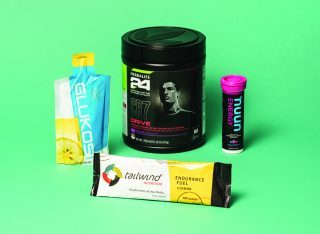
Electrolytes are made up of four electrically charged minerals: sodium, potassium, magnesium and calcium—which we lose through sweating. For endurance runners, excessive loss of electrolytes, primarily sodium, along with inadequate hydration could lead to muscle cramping—it’s the body’s first indication, along with salt streaks, that you’re low on these essential minerals.
“Electrolytes are essential for chemical reactions, muscle contraction and transport of fluid into the blood and cells to maintain equilibrium of fluid balance in the body,” says Liz Broad, a USOC senior sports dietitian. “The amount of electrolytes an individual loses during exercise depends on their sweat rate and a range of other factors.”
Broad adds that most people don’t need to replenish their electrolytes if they’re working out for less than an hour. Otherwise it’s recommended to drink 500 to 750ml of water with 200 to 500mg of electrolytes per hour during exercise, especially in hot conditions and if you’re a particularly aggressive sweater. For this summer’s peak temps when you’re sweating buckets, drinking only water might not cut it, and these electrolyte supplements will do more than just quench your thirst.
Photos: Oliver Baker
Photo Gallery
1 of {count}
Back to Start
View Larger Image

Herbalife 24 CR7 Drive, $32 for 29-ounce container
With a total of 320mg of electrolytes per single scoop serving mixed with 8 ounces of water, this formula is most ideal for workouts lasting longer than 90 minutes. Unlike most traditional sports drinks, the CR7 Drive does not rely on artificial sweeteners, giving the acai berry flavor a more diluted and crisp taste. However, our testers did notice that the powder took some time to dissolve completely and much of it seemed to linger at the bottom of the bottle.
View Larger Image

Tailwind Endurance Fuel, $16 for pack of 7 sticks
It’s called Endurance Fuel for a reason—a single on-the-go stick contains 200 calories and 431mg of electrolytes in 24 ounces of water. It’s meant for ultra races and all-day hydration in which constant electrolyte replenishment is key. The all-natural ingredients make this product easy to digest, and gives it a clean and light flavor. Compared to the Herbalife 24 CR7 Drive, the powder dissolves more quickly after a few vigorous shakes.
View Larger Image

Glukos Energy Gel, $24 for case of 12
Instead of carrying a bulky water bottle mixed or dissolved with hydration powders or tablets, grab a pouch or two of this energy “gel” that’s more liquid than GU-consistency. The ingredients are simple: Its main ingredient is, yes, glucose. Out of all the sugars (which include sucrose and fructose), glucose is the fastest absorbed sugar, starting the moment it’s consumed. One highly concentrated 2-ounce gel pouch will provide the same amount of energy and 168mg of electrolytes as mixing one scoop of the drink powder in 8 ounces of water. Be prepared, though, because of the high concentration, the flavor is more intense than most products.
View Larger Image

Nuun Energy, $7 for a single tube of 10 tablets
Nuun has reformulated its electrolyte tablets, which now contain plant-based sweeteners and essential B-vitamins, including monk fruit extract, beet juice powder and avocado oil. The Energy formula also contains 40mg of caffeine sourced from green tea leaf extract—great for morning runs where coffee might not be an option. A single tablet contains the least amount of calories with the most electrolytes: 10 calories per 498mg in 16 ounces of water. Plus, our testers found that the tablets dissolve better than its powder counterpart (and it’s easy to pack on the go or while traveling).
View Larger Image

GQ-6 Flooid, $40 for 33-ounce container
Not only does this electrolyte drink mix keep you hydrated, it also doubles as a fuel source with three different carbohydrate sources (maltodextrin, glucose and fructose). It contains zero artificial flavors or colors (hence the clean taste that blends easily in water) with only 115 calories per serving.
View Larger Image

Clif Hydration Electrolyte Drink Mix, $20 per 15.5-ounce pouch
Clif Bar now has its own hydration product that packs 150mg of electrolytes in a single serving. The ingredients are organically sourced and provides a light tart taste that dissolves well in water. Tip: Best served with ice for an even more refreshing flavor.
Related Galleries

All-Natural Fuel Alternatives

Photos: New Sports Nutrition at Natural Products Expo West
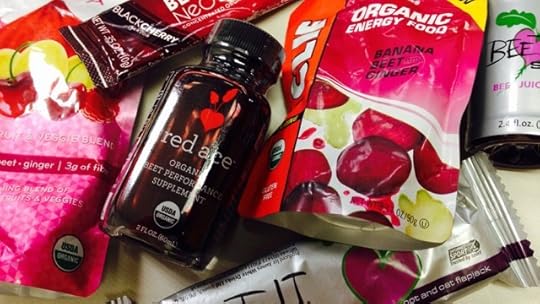
5 Beet Juice Products for Endurance Athletes

More Galleries
The post Electrolytes: Are You Getting Enough? appeared first on Competitor.com.
2016 Fall Road Running Shoe Buyer’s Guide
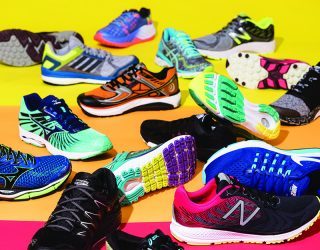
Photo: Oliver Baker
If there’s one thing we’ve learned in recent years, it’s that cushioning matters. While the minimalist shoe revolution served us well — with cues to better shoe design and lighter shoes and by reinstating the importance of good running form — it’s ample cushioning that matters most for the vast majority of runners. This fall’s crop of shoes takes cushioning to a new level, with new types of foam, new shoe construction techniques and, generally, smoother and more comfortable shoes for logging your miles than ever before. Browse through our reviews of these 15 great new models and then head to your local running shop and find the one that works best for you.
Shoe weights listed in this review are based on men’s size 9.0 and women’s size 7.0
The post 2016 Fall Road Running Shoe Buyer’s Guide appeared first on Competitor.com.
July 22, 2016
From Broke Gambler to Director of a Running Nonprofit
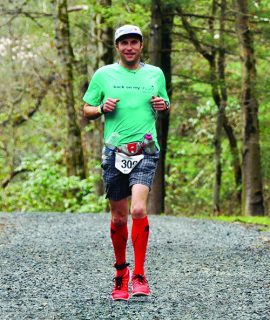
Terence Gerchberg says running saved his life.
“You put one foot in front of the other and repeat,” says Gerchberg, the executive director of the New York City chapter of Back on My Feet (BoMF), a nonprofit organization that helps the homeless partly by getting them involved in running. “There are highs and lows but you keep going, just like life.”
Born in New York and raised in Southern California, Gerchberg, 44, played sports as a kid, but never ran. His first race was a 3.5-mile corporate challenge in 2002. But running wasn’t his focus, gambling was. At the time, Gerchberg worked on Wall Street and was still reeling from 9/11, using card games as his escape, an escape that caused him to lose everything. After hitting rock bottom, sleeping on his sister’s couch because he couldn’t afford to pay rent, Gerchberg entered a rehab program in Maryland—and he and a friend entered the lottery to run the New York City Marathon. While in treatment, a friend called to say he had been accepted.
“Running became my catalyst for change,” says Gerchberg, who has since run 13 consecutive New York City Marathons and is registered for his 14th this year. “Running gave me those endorphins and a second chance. I don’t know where I would be without it.”
While training for the 2002 marathon, Gerchberg says he became a “real” runner. “I logged my miles, read Alberto Salazar’s books, picked up magazines.” By 2003, he was coaching others, saying he sees his role as that of a motivator more than a coach.
“There is no ‘S’ on my chest. Anyone is capable of doing what I’ve done,” says Gerchberg, who has a marathon personal best of 2:57:59. “Maybe the next water station or finishing a marathon is your goal. Maybe it’s securing housing or finding a job, like those with Back on My Feet. Either way, you need the dedication and discipline to keep going.”
Gerchberg first became involved with BoMF in 2012, when he volunteered at one of its morning runs. He became a regular because he says the way it starts your day is perfect, and he enjoys giving back to the sport that has given him a renewed zeal for life.
He has declared 2016 as the year for “bigger and better things” both personally and professionally. In addition to running Leadville 100, his first 100-miler, in Colorado this August, Gerchberg wants more people from BoMF to have access to races and feel the sense of accomplishment that comes from reaching a goal.
“Running is such a beautiful thing,” Gerchberg says. “My passion has become my profession. Every day, I think, ‘I get to do this.’”
The post From Broke Gambler to Director of a Running Nonprofit appeared first on Competitor.com.
Coach Culpepper: Supplementing Running with Strength Training
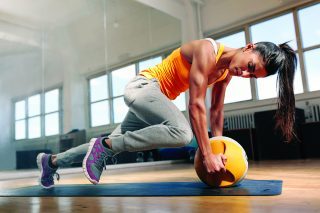
I feel fortunate to have very few regrets when looking back at my competitive running career. One area of regret, though, is supplemental strength training. I was swept up in the mentality that any extra time and energy should go toward more mileage and I lost sight of being a well-rounded athlete.
Injury prevention and added power—which translates to better speed and additional muscular endurance—are two of the key benefits of strength training. Here are two things to think about when making strength training a part of your overall routine.
Integration
Like many athletes, I failed at integrating strength training into an overall routine. I was unwilling to compromise my running in any way and simply tried to add strength work on top of everything I was already doing. This only brought frustration, not to mention added fatigue.
The most effective way to integrate strength training is by slightly altering your running routine. Two or three days a week—on either off days or recovery days—is the best approach even if this means cutting back some of your running. Substituting 10–15 minutes of running with a 25–35-minute strength routine is a good approach. Build the strength workout into your training plan from the onset and make slight adjustments to your running so that you can effectively integrate this important element.
The key word: Supplement
The most important thing to remember with any sort of cross-training is to supplement and benefit your running—not take away from it. The great thing about strength work is that a little goes a long way. Strength work isn’t a replacement for running but rather an addition to the training already being done (just in a slightly modified way). Don’t just add more on top of what you are doing; rather, make slight adjustments and fold the strength training into your weekly routine.
It will take some time for your body to adapt both physically and mentally to the new stimulus, but you will be surprised at how much better you begin to feel even after a few weeks. Be mindful of intensity: Remember, the key word is “supplement.” Strength workouts should be done with moderate intensity, or just enough to get the desired adaptation. They should not hinder your next running session.
RELATED: Strength Training is Good for You, Runners—Here’s Proof
The post Coach Culpepper: Supplementing Running with Strength Training appeared first on Competitor.com.
Video: Lauren Fleshman—From Retiring to Rewiring
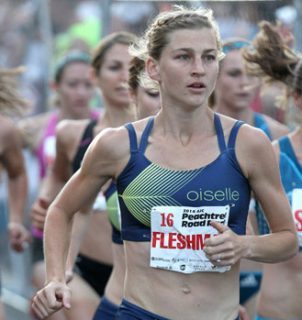
Lauren Fleshman has had an incredible running career, winning five NCAA titles while at Stanford and twice winning the U.S. championships in the 5,000-meter run as a pro. She also placed seventh in that event at the 2011 IAAF World Championships and posted competitive PRs from the 1,500m (4:05.62) to the 5,000m (14:58.58), not to mention adding a solid 2:37:23, 12th-place effort in the 2011 New York City Marathon. In the meantime, she’s also become one of the biggest personalities in running, an accomplished entrepreneur as one of the co-founders of Picky Bars and a successful writer as the co-author of the “Believe Training Journal” (VeloPress, 2014). (Fleshman and co-author Ro McGettigan-Dumas will be releasing the “Believe Logbook” and the “Compete Training Journal” this fall.) In this video posted by Oiselle, the 34-year-old Fleshman offers a heartfelt thank you to her supporters as she explains her decision to retire from competitive racing while offering thoughts as to what’s next.
The post Video: Lauren Fleshman—From Retiring to Rewiring appeared first on Competitor.com.
Shoe of the Week: Brooks Ghost 9
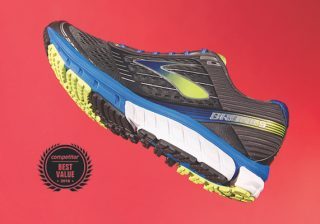
The Ghost is one of the premier neutral shoes in the high-mileage everyday trainer category, but it doesn’t come with an inflated price tag like some of the “premium” shoes with more glitz and features. The first thing you notice about this shoe is its plush interior and cozy fit. Then it’s the cushioned yet responsive ride. The biggest upgrade to this year’s model is the slightly modified engineered mesh upper, which offers optimal support while also allowing it to fi t a wider range of foot shapes. The ride is softly cushioned and well-balanced and rolls smoothly from heel to toe, making it versatile enough to use as a do-everything shoe, from long runs to modest speed workouts and longer races. Although it’s not one of the lightest shoes out there, it was still one of the most liked by our testers. Several testers said the Ghost 9 felt lighter than they expected when pulling them out of the box for the first time. Although it’s a neutral shoe, a few wear-testers felt the foam undercarriage felt a tad bit too big and controlling.
This is the shoe for you if … You’re looking for a soft and thickly cushioned shoe geared for 10K, half marathon and marathon training.
Price: $120
Weights 10.6 oz. (men’s), 9.1 oz. (women’s)
Heel-to-Toe Offset: 12mm; 30mm (heel), 18mm (forefoot)
Info: BrooksRunning.com
RELATED: Skechers Performance GoMeb Strada 2
The post Shoe of the Week: Brooks Ghost 9 appeared first on Competitor.com.
Video: 86-Year-Old Sprinter Don Cheek is Fast and Inspiring
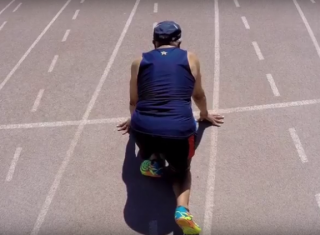
You’re bound to be inspired by this video from the Fresno Bee about 86-year-old Don Cheek of Clovis, Calif. Not only is he one the nation’s fastest sprinters in the 85-89 age group, he’s also among the fastest in the world. At the Pasadena Senior Games in June, Cheek ran the 100 in 17.63 to win the event in his age group, and he also won the 50m (9.37) and 200m (41.33). Over the decades, Cheek, a retired psychology professor, has held many national records and earned numerous medals, including a gold in the 400m at the inaugural World Masters Athletics Championships in Toronto in 1975. He’s trying to raise money in a GoFundMe campaign to he can compete in the2016 World Masters Athletic Championships in Perth, Australia, in October.
MORE: Fresno Bee
The post Video: 86-Year-Old Sprinter Don Cheek is Fast and Inspiring appeared first on Competitor.com.
Flashback: Watch Alan Webb’s 3:46.91 American Record in the Mile

On July 21, 2007, Alan Webb broke Steve Scott’s 25-year-old American record in the mile, running a 3:46.91 with help from a few pacers at a small meet in Brasschaat, Belgium. As of 2016, Webb’s time is the eighth-fastest time in history while Scott’s 3:47.69 from 1982 remains the No. 13 time on the all-time list.
The post Flashback: Watch Alan Webb’s 3:46.91 American Record in the Mile appeared first on Competitor.com.
July 21, 2016
How Running Surfaces and Speed Influences Your Risk of Injury
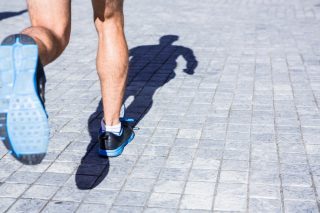
The next time you’re at the starting line of a race, look around and consider that the majority of nearby runners will likely experience an injury in the following year. It’s a scary thought, isn’t it?
Despite innovations in shoe cushioning, training and sports science, the rate of running injuries hasn’t budged since shoes were being made in waffle irons. One of the reasons for this unchanging rate is likely that each runner is their own laboratory, with a specific set of injury do’s and don’ts that depend on gender, genetics and a whole host of other factors.
Part of that runner-specific individuality is the speed you run and surfaces you choose. Some love trails and some pound the concrete in dense urban jungles. But what surface is best, and how fast should you run to stay healthy? The answer to those questions isn’t as obvious as one would think, largely due to the fact that many of the commonly held notions about the causes of running injury don’t actually make the scientific cut.
Take running surface, for instance. Though popular belief holds that running on trails or softer surfaces is easier on the joints, well-established scientific evidence says otherwise. It turns out that the brain has its own version of a car’s road sensing suspension—something termed “muscle tuning.” While running, the brain constantly anticipates the stiffness of the surface—using data from past experience and information from the previous stride—and “tunes” how strongly the leg muscles contract before the foot hits the ground.
So when the trail gets softer, the leg becomes stiffer, leaving the net impact to the leg roughly the same. It’s how the body maintains the overall stiffness of the surface/shoe/leg combination and it’s the reason why running on softer surfaces doesn’t necessarily result in a lower rate of injury. The overall impact to the leg remains virtually the same whether running on trails, a beach or concrete.
But there’s an asterisk. “We know how the body adjusts to different surfaces in the short term, but what we don’t know are the long term consequences of running on a particular surface,” says Dr. Brian Heiderscheit, Director of the University of Wisconsin’s Runners’ Clinic.
Of course, the cushioning of the shoe impacts the equation as well, and could be part of the reason why ultra-cushioned shoes haven’t solved the injury conundrum. Just like a softer surface, the legs will adjust to a softer cushioned shoe by increasing leg stiffness. In fact, one of the few studies to evaluate shoe cushioning and impact forces found evidence to support the soft shoe, stiff landing theory.
What about the treadmill? The dampened surface of a treadmill has long been believed to be beneficial to the joints. But impact represents only one of the stresses to the body with running; also important is the stress to soft tissue structures like tendons and muscles. An example of this is running uphill—though it imposes less impact to the joints, the muscles of the calf, hamstring and hip have to work harder, increasing the stress to the hamstring and Achilles tendons.
In fact, in a recent study comparing loads to the kneecap and Achilles tendon during treadmill and overground running, researchers found a 14 percent greater overall stress to the Achilles tendon as compared to overground running (load to the kneecap was roughly equal during both). While the results of the study shouldn’t spur wholesale abandonment of treadmills, it should serve as a note of caution for those that use them regularly, especially those with a history of Achilles injury.
To minimize the risk of injury, Heiderscheit believes that runners should vary running surface, much like they vary their training plans. “Just like a runner would try runs of different intensities—tempo and interval training for instance—my advice is to incorporate a little bit of all the different surfaces into training,” Heiderscheit says.
RELATED: The Importance of Varying Your Running Surfaces
Just as the finer points of running style and foot landing have been scrutinized by experts, so too has the question of optimal running speed. With the link of speed work to overuse injury, many would assume that running faster equals a greater risk of injury.
But, again, every runner is different, and slower may not always be better. “The majority of forces generally scale up with increasing speed, but running faster isn’t necessarily uniformly more demanding to the entire body,” says Heiderscheit. The structures that face the greatest increase in demand are the muscles and tendons tasked to supplying that extra speed—hamstrings, calf and glutes—with other structures realizing a less pronounced demand.
Several recent studies illustrate that point. A 2015 article in the Journal of Orthopedic and Sports Physical Therapy sheds a little light on the role running speed plays in the amount of impact the knee experiences when running. Researchers from the Department of Public Health at Denmark’s Aarhus University asked a group of runners to run 1 kilometer at three different speeds: 5 mph, 7.3 mph and 9.8 mph.
Although the impact stress to the knee with every stride increased with faster running, the total stress to the knee was 30 percent less at the faster speed because of the lower number of strides needed to cover the same distance. On the basis of these findings, running longer distances at slower speeds, especially when fatigued, may contribute to overuse injuries of the knee.
Before you push the accelerator, consider again that injury risk can’t simply be boiled down to impact. Other research—conducted by the same Danish group and presented in Clinical Biomechanics—determined that the extra energy supplied by the muscles of the calf and foot with an increase in speed predisposes the Achilles and plantar fascia to injury.
The bottom line is: There isn’t one surface or speed that is right for everyone. For runners looking to avoid injury, cross-training shouldn’t just involve the elliptical or bike, but also running on different surfaces and at varied speeds.
The post How Running Surfaces and Speed Influences Your Risk of Injury appeared first on Competitor.com.
Speed Goggles: Alexi Pappas Makes New Running Video Series

Alexi Pappas has other talents besides running. She’s also a writer, a filmmaker and an actress who frequently sports a messy bun with a personality of its own. Her latest project, “Speed Goggles,” is a five-part video series about runners released on The New York Times website.
The 26-year-old elite runner from Eugene, Ore., created the series with partner Jeremy Teicher who also co-wrote and co-directed Pappas’ most recent film “Tracktown” that debuted at the L.A. Film Festival in June. The first video introduces elite runners Pappas and two-time Olympian Andrew Wheating in a style best described as a parody on old nature documentaries with detailed descriptions of the runners’ day. Two other videos have been released, titled “Nightmares Mean You Care” and “Normal People.”
When asked by The New York Times, what Pappas wants people to gain from these videos, she said, “I hope people identify with these films in some way and also see a world they may not always see. It’s the life of an elite runner outside the track. I think runners will appreciate the elements of it, and hopefully laugh along with us.”
In August, Pappas, a Greek-American, will also be representing Greece at the Rio Olympics in the 10,000-meter event.
The post Speed Goggles: Alexi Pappas Makes New Running Video Series appeared first on Competitor.com.
Ryan Hall's Blog
- Ryan Hall's profile
- 21 followers



